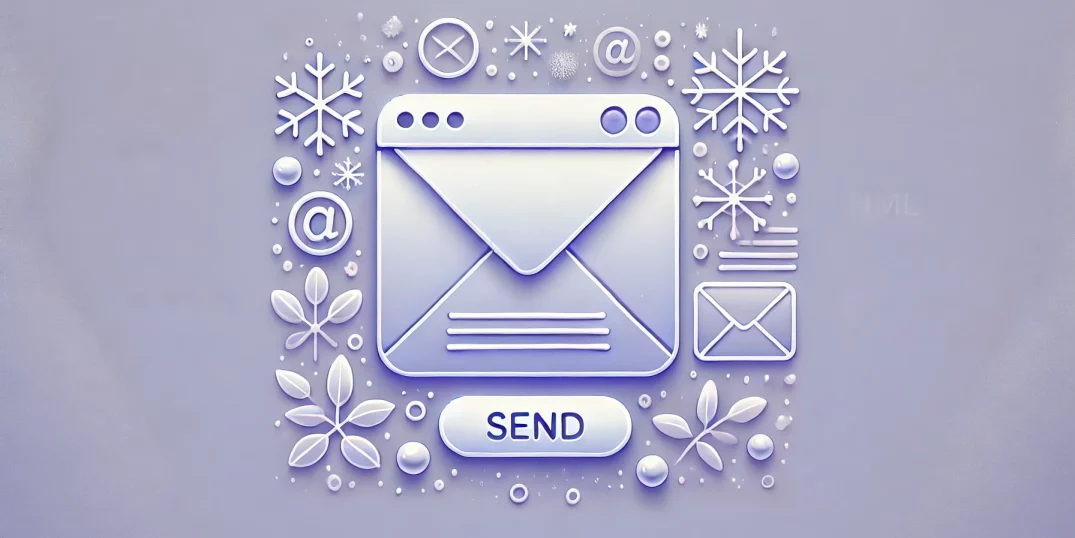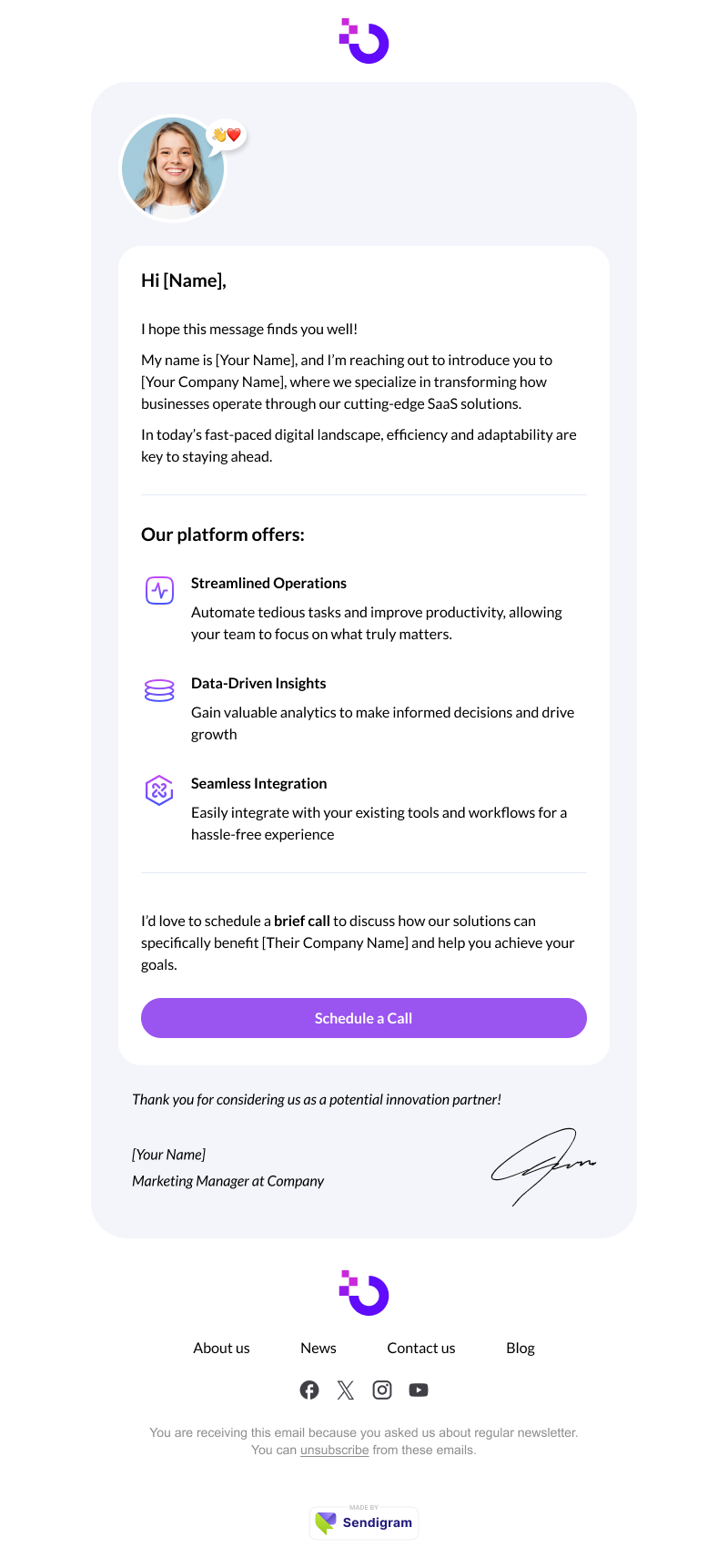- Home
- Email Templates
- Free HTML Cold Email Templates ...

A cold email response rate typically falls between 1% and 5%, which might not seem impressive at first. However, these numbers don’t tell the full story. Some businesses consistently achieve response rates of 20% or even higher, turning cold outreach into a reliable growth engine. So, what sets them apart? Why do some companies struggle to get even a single reply, while others are so much ahead of their competition in crafting emails that work?
The secret isn’t just about sending more emails—it’s about sending the right emails. The companies that outperform their competitors know how to craft messages that feel personal, relevant, and impossible to ignore. They master the balance of timing, tone, personalization, and strategic follow-ups, making their cold emails feel like a genuine connection. In this article, we’ll break down the key factors that separate high-performing cold emails from the rest—and how you can apply these strategies to boost your own response rates.
Cold Email Template for SaaS

Why this template works
This cold outreach email template is very straightforward. Yet, it maintains a personal, engaging tone. Cold emails often get ignored, but this one increases the chances of a response by keeping things concise, relevant, and easy to read.
Right from the start, this template feels like a warm conversation. It avoids the robotic, formal approach that many cold sales email templates fall into. This helps break down initial resistance and makes the recipient more likely to keep on reading.
The structure is very logical too—a quick introduction, a clear value proposition, and a low-pressure call to action (CTA). Instead of overwhelming the recipient with too much information, the email highlights how the service benefits them specifically. This makes it one of the best cold email templates, as it focuses directly on the recipient’s needs.
Customization ideas
- AI-powered personalization
Integrate AI into this cold email template to dynamically customize key sections based on the recipient’s company, role, or recent activities. Like this, you can make it feel highly relevant and less like a mass email.
- Interactive CTA
Rather than a simple “Schedule a call” CTA, make it more engaging and user-driven. The email could offer two quick options:
- A one-click button to select a meeting time.
- A short multiple-choice poll where the recipient can choose what interests them most (e.g., “Want to see a quick demo?” or “Prefer a case study?”).
Cold Email Template for E-Commerce

Why this template works
Thanks to its topic, cozy color scheme, and imagery, this cold email template feels warm rather than cold. The intro feels very personal—exactly like a friendly recommendation over a cup of coffee on a rainy day.
The email’s structure is very easy to follow, and more than that—it feels engaging. The “Monthly Curated Selection” section offers different subscription options, each of which feels very tempting to try.
A bonus in the form of a 10% discount for new subscribers is always a great idea for attracting new customers, and this cold email template makes sure that it is visible by placing it in the middle of the template. It is followed by customer reviews that feel as warm as the product itself, which contributes to a warm, inviting ambience of the template. Real experiences and testimonials add credibility and a human touch, which turns commercial offers into something tangible.
The CTAs of this cold sales email template are worth separate mentioning, as each of them inspires a unique action. If a user is not ready for a purchase, they can join the community and know more about the product there or simply explore the offer. By diversifying its CTAs, the company increases the possibility of user engagement.
Customization ideas
- Story-driven personalization
Instead of a standard introduction, the email could start with a mini customer success story relevant to the recipient’s industry. For example, “Meet [customer name], a small business owner just like you. Last month, they struggled with [problem], but after using [your product], they saw [specific result].” This makes the email feel more like a personal recommendation rather than a generic cold outreach email template.
- Gamification with a “mystery reward”
Encourage interaction by incorporating a mystery discount or exclusive deal in your cold outreach email template, making it fun and exciting to engage. It can be something like this: “We’ve got a surprise waiting for you! Open to reveal your exclusive discount—it could be 10%, 15%, or even a free gift.” Adding an element of surprise boosts engagement and click-through rates.
What Is a Cold Email?
A cold email is an unsolicited email sent to someone who hasn’t previously interacted with your brand or business. Nonetheless, unlike spam, which is often irrelevant and sent in bulk, a cold email that works is targeted, personalized, and value-driven. Its aim is to spark a genuine curiosity and start a conversation.
Think of it as the digital equivalent of a cold call, but far less disruptive. A cold outreach email, if done right, doesn’t demand immediate action—instead, it introduces, builds curiosity, and encourages engagement.
For more info about different types of cold emails, their pros and cons, and more, check out this article: What Is a Cold Email?
Best Practices for Cold Email Outreach
Cold emails that get responses don’t feel “cold” at all. They should be warm, personal, and inviting. Here are some key strategies to ensure your cold outreach feels human, builds connection, and gets responses.
1. Make the copy feel warm and personal
A robotic, overly formal email will be ignored. A cold email should feel like a friendly, thoughtful message from a real person. Use conversational language, short sentences, and a natural tone to make it feel like an organic interaction.
2. Keep the formatting clean and easy to read
A visually overwhelming email—full of long paragraphs, excessive bolding, or unnecessary images—can turn people off. Keep your formatting clean, scannable, and effortless to digest.
People scan emails before they commit to reading them. If your email looks like a wall of text, they’ll hit delete before even giving it a chance.
3. Use the right color scheme (if you’re adding visuals)
If you’re incorporating visuals (such as a logo or an embedded image), stick to a simple, professional color scheme that aligns with your brand identity.
4. Speak directly to the recipient’s pain points
A cold email should feel like it was written specifically for the recipient, not pulled from a generic sales script. Research their company, industry, and possible challenges, then tailor your message to show you understand their needs.
5. Avoid overloading with links and attachments
Too many links in an email can feel spammy and may even land you in the recipient’s junk folder. If you need to include a link, stick to just one and ensure it looks clean (avoid long, messy URLs).
Email is not the only cold outreach technique out there—here, you will learn about other effective methods: Cold Outreach Success: Best Practices for 2025.
How to Write a Cold Email That Works?
When it comes to cold email outreach, it is important to make a first impression positive but in a non-intrusive way. The challenge here is that you have only a few seconds to capture attention—without being intrusive. The key to success is to spark curiosity and provide immediate value. Below are some tips on how to do exactly this:
- Personalization is key
A generic email won’t get a response. Mention the recipient’s company, role, or a relevant challenge to make the message feel intentional rather than mass-sent.
- Short but intriguing subject line
Your subject line should grab attention in just a few words. Make it personal, curiosity-driven, and relevant—avoid vague phrases like “Just Following Up.”
- Get to the point quickly
Cold emails aren’t the place for long explanations. Introduce yourself briefly, highlight the value for the recipient, and keep it concise.
- Provide social proof or credibility
A quick mention of a well-known client, a case study, or an industry result builds trust and makes your offer feel more legitimate.
- Make the CTA low-friction
Make your CTAs feel like an easy next step—a short chat, a case study, or a quick resource that adds value.
- Follow up without spamming
Most replies come after a few emails, not the first. Space out follow-ups and add something new each time instead of repeating the same message.
If you are looking forward to mastering a cold email in a more innovative manner, you’ll find guidance on how to do it here: Classic vs. Innovative: Mastering Cold Email Examples for Every Scenario.
Do Cold Emails Need Follow-Ups?
Yes, cold emails absolutely need follow-ups. In fact, most responses come from follow-ups rather than the initial email. A single email often gets lost in inbox clutter, ignored, or forgotten. A well-crafted follow-up can significantly increase your chances of getting a reply.
A common best practice is around 3–5 follow-ups, spread over 1–2 weeks. Anything beyond that risks coming across as spammy.
For more tips on how to master follow-ups, read our article here: Cold Email Follow-Up: Never Ignore the Chance to Turn Silence into Opportunity.
Cold Email Subject Lines Can Make You or Break You
The subject line determines whether your email gets opened or ignored. Even the best cold email won’t matter if no one reads it. A good subject line grabs attention, sparks curiosity, and feels relevant. A bad one gets ignored or lands in spam.
For example, the “Quick Idea for Boosting [Company Name]’s [Specific Goal]” subject line feels personal and relevant to the recipient. It immediately suggests value. Besides, it is also short and clear, so it won’t get cut off in the inbox preview.
On the other hand, a bad subject line, such as “Grow Your Revenue by 500%! Exclusive Offer Inside,” comes across as overly promotional and exaggerated, which triggers skepticism. The use of words like “exclusive offer” makes it feel like a generic marketing email. Finally, it lacks any personalization, making it easy to ignore or mark as spam.
For more great subject line ideas, read this article: 15 Best Subject Lines for Cold Emails.
To Sum Up
Cold email outreach means much more than just sending messages—it’s about starting conversations. The difference between an ignored email and one that gets a response isn’t luck—it’s the right mix of personalization, timing, relevance, and a human touch. The companies achieving 20%+ response rates don’t rely on generic templates. They use industry-specific cold email templates to craft thoughtful, well-researched emails that make the recipient feel like the message was written especially for them.
By focusing on quality over quantity, warming up cold emails with a natural and engaging tone, and following up strategically, you can significantly improve your outreach success. Now, it’s your turn to apply these principles. Start crafting smarter, more compelling emails, and your response rates will soon start to rise.



